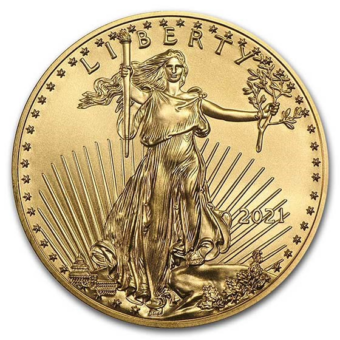A Daily Journey Through the Week's Market
Monday - 11.11..24: Gold prices declined to $2,670 per ounce amid a stronger dollar, with investors awaiting U.S. economic data and Fed comments on rate cuts. Silver dropped 0.3%, while platinum and palladium gained.
Tuesday - 11.12..24:. Gold stayed near a one-month low at $2,617 as markets awaited Fed updates and economic reports. Investors expect inflation data and Fed speeches to impact policy outlook. Silver fell 0.4%, with platinum and palladium also lower.
Wednesday - 11.13..24: Gold rebounded to $2,610 with bargain buying ahead of U.S. CPI data, which could affect Fed decisions. The market is watching inflation signals, with silver up 1% and modest gains for platinum and palladium.
Thursday - 11.14..24: Gold prices fell to a two-month low, extending a five-session decline, as recent U.S. inflation data reduced expectations for imminent rate cuts. The anticipation of a stronger dollar and higher interest rates under the new administration weighed on gold’s safe-haven appeal. Diminished geopolitical risk perceptions also contributed to the decline. However, ongoing central bank interest, especially from China, offers some long-term support.
Friday - 11.15.24: Gold prices dipped early Friday after stronger-than-expected U.S. retail sales data supported a hawkish monetary outlook, leading to gold's largest weekly drop since 2021, down nearly 5%. December gold slipped $6.10 to $2,566.70, while silver held steady at $30.62. October retail sales rose 0.4%, exceeding forecasts, following robust inflation data earlier this week. Fed Chair Powell’s hawkish comments Thursday spooked markets, reducing expectations for a December rate cut from 82% to 62%, although the Boston Fed noted a rate cut remains "on the table."
Gold falls as New York manufacturing surges beyond expectations
By the numbers: The New York Fed’s Empire State manufacturing index soared to 31.2 in November, a stunning rebound from -11.9 in October, defying forecasts that anticipated a mild -0.7. This marks the strongest reading in nearly three years.
- What's new: "Business activity grew strongly," the Fed reported, with significant rises in new orders and shipments, and delivery times slightly extended amid lower supply availability.
- Inventories: Held steady at 1.0, signaling a leveling off.
- Labor market: Employment held steady, with a minor uptick in the workweek.
- Prices: Input and selling prices showed modest, steady increases similar to last month.
Market impact: Spot gold dipped sharply after the announcement, down 0.10% to $2,562.16 per ounce.
Report highlights:
- New orders spiked, with the index jumping 38 points to 28.0.
- Shipments saw a 35-point increase, reaching 32.5, indicating robust activity.
- Unfilled orders declined slightly, while delivery times lengthened, signaling tighter supply chains.
- Labor conditions were stable, with the employee index at 0.9, while hours worked saw a minor increase, reaching 6.1.
- Prices: The prices paid index held at 27.8, while prices received landed at 12.4.
Outlook: Firms are upbeat, expecting ongoing improvement. The future business activity index softened slightly to 33.2 but remains optimistic, with half of respondents foreseeing better conditions ahead. Employment and capital spending are also projected to grow modestly over the next six months.
Trump Investment Playbook: Preparing for the American System
What’s happening:
With Trump returning to the White House, investors are eyeing opportunities poised to benefit from his "America First" policies. Trump's advisors, Robert Lighthizer and Peter Navarro, are pushing a modern revival of the historic American System, a 1790s economic plan focused on U.S. self-reliance through high tariffs, infrastructure, and limited central bank powers.
Key sectors to watch:
- Energy: Trump’s policies on drilling and production will favor oil and gas companies, with increased leasing, offshore drilling, and expanded refinery capacity boosting the industry.
- Mining: Industrial metals like gold, silver, and copper will see demand rise as U.S. manufacturing grows. Precious metals may serve as safe-haven assets amid global uncertainties.
- Defense & Security: Companies in advanced weapons and AI-driven intelligence are set to gain as Trump prioritizes modern defense tech over outdated weaponry.
- Automobile Manufacturing: Foreign manufacturers could face tariffs, encouraging domestic car production and possibly reshaping trade under USMCA.
- Cryptocurrency: Easing regulations on crypto mining and distribution could spark growth in the sector.
Likely laggards:
- Big Pharma & Big Agriculture: "Make America Healthy Again" initiatives led by Robert F. Kennedy Jr. will focus on curbing the influence of these sectors.
- Green Energy & DEI: Projects like EVs and wind energy could face budget cuts, while diversity initiatives may lose funding under Musk's push for efficiency.
The bottom line:
Trump's economic revival plan could drive a boom in traditional industries while challenging companies relying on globalism, China, or ESG metrics. For investors, sectors benefiting from U.S. self-reliance are positioned for gains, while those tied to global or progressive policies may struggle.
Fed’s Nightmare: Rising Stagflation Risks
What’s happening:
After a hotter-than-expected Producer Price Index (PPI) report, The Kobeissi Letter warns that the Fed's worst fears may be materializing as stagflation looms. With both CPI and PPI inflation rising again since September 2022, the analysts suggest the dreaded combination of inflation and economic stagnation may have begun.
Why it matters:
For the first time since April, core PPI and CPI inflation are above 3%, despite the Fed’s belief that inflation was inching towards its 2% target. Instead, inflation seems entrenched above 2%, even as the Fed cut rates by 75 basis points this year. Rising yields are compounding the issue, with 10-year note rates climbing sharply and mortgage rates potentially exceeding 8%.
Leading indicators:
Temporary help services jobs have dropped for 23 consecutive months, signaling potential unemployment hikes. Given this trend, The Kobeissi Letter recommends shorting the SPX, with inflation fears stretching into 2025.
The Fed dilemma:
Fed Chair Powell initially downplayed stagflation risks but now admits that avoiding it is a primary goal. The challenge: rate hikes risk recession, while cuts could fuel inflation further, a lose-lose scenario echoing the "inflation is transitory" stance of 2021.
Big picture:
As inflationary pressures return, The Kobeissi Letter highlights the fiscal parallels to the 1970s, predicting more volatility across bonds, commodities, and equities in 2025.
Bitcoin’s Rally Pauses as Fed Considers Holding Rate Cuts
What’s happening:
Bitcoin paused at $88,000 after reaching a high of $93,540, with Fed officials hinting that future rate cuts may be put on hold if inflation rises. Fed Governor Adriana Kugler noted progress on inflation goals but warned that wage pressures and housing costs could stall further rate cuts.
Why it matters:
Concerns over a potential rate cut hold have unsettled markets. Kugler’s comments, combined with a hotter-than-expected Producer Price Index (PPI), suggest that inflation risks could outweigh the Fed’s current easing path. This pause comes as Bitcoin experiences inflows of $4 billion from traditional funds, fueled partly by speculation about its role as a reserve asset under the new administration.
Market impact:
Most analysts view this consolidation as a short pause in Bitcoin's bullish trend. Chief Analyst Ryan Lee at Bitget Research believes BTC is set to resume its climb, especially with President-elect Trump’s support, potentially elevating Bitcoin’s status to a national reserve asset.
Looking ahead:
Market watchers are eyeing key indicators, including funding rates and BTC ETF inflows, to gauge Bitcoin’s momentum. With odds of reaching $100,000 by year-end at 60%, Bitcoin could hit new records if current trends and favorable policies continue.
Gold’s Comeback? Inflation and Fed Decisions Loom
What’s happening:
Gold prices are in the spotlight as surging inflation and potential Fed rate cuts stir interest. The latest U.S. CPI report, which came in at 2.6% against an expected 2.4%, suggests inflation could be more persistent, strengthening the case for gold as an inflation hedge.
Why it matters:
Rising inflation typically supports gold, as higher prices decrease the dollar’s purchasing power and boost demand for tangible assets. However, with a rate cut expected in December, any dollar weakness may already be priced in, leaving minimal room for immediate gold gains.
Fed's next move:
Fed Chair Jerome Powell’s upcoming remarks will be critical for gold markets. If Powell maintains a cautious stance on inflation, it could limit dollar devaluation, dampening gold's near-term upside. Conversely, President-elect Trump’s potential pressure on the Fed to cut rates faster could weaken the dollar, creating a favorable environment for gold.
Outlook:
Gold’s prospects hinge on Fed policies and political pressures. If inflation persists or Trump pushes for aggressive rate cuts, gold could rally. However, a strong dollar or a restrained Fed could cap gold’s rise. Investors may find strategic entry points amid these uncertainties, especially with inflationary pressures and political shifts in play.
Totalitarianism Begins with Denying Economics
What’s happening:
Economics has long faced hostility, as its neutral, fact-based nature often challenges political ideologies. Misunderstanding or denying economic principles creates fertile ground for totalitarianism, warns Michael Njoku. Historicism and Marxism are two examples where denial of economic fundamentals has paved the way for coercive regimes.
Key points:
- Historicism’s Influence: Historicism rejects universal economic laws, claiming they apply only to specific times and places. This denial led to ideas like racial and cultural “polylogism,” ultimately fueling policies of autarky and state control, especially in pre-WWII Germany.
- Marxism’s Class-Based Rejection: Marxism frames economics as a bourgeois ideology, asserting that capitalist economics serves only the ruling class. This view ignores fundamental economic principles, leading to repeated failures in Marxist experiments worldwide.
- Interventionism as a Path to Totalitarianism: “Middle-of-the-road” policies that mix free markets with state intervention often lead to more state control as interventions fail to meet their goals. According to Mises, interventionism eventually requires coercion to “fix” the market, steering societies toward authoritarian rule.
The bottom line:
Ignoring or distorting economic science can lead societies down a dangerous path, where economic mismanagement necessitates forceful state intervention. Embracing free-market principles provides a sustainable path to prosperity and cooperation without resorting to state-imposed coercion.
Next Week’s Key Events
Monday, Nov. 18
Tuesday, Nov. 19
- 8:30 am: Housing Starts and Permits (October)
Wednesday, Nov. 20
- No reports scheduled
Thursday, Nov. 21
- 8:30 am: Initial Jobless Claims (Nov. 16)
- 8:30 am: Philadelphia Fed Manufacturing Survey
- 8:45 am: Cleveland Fed President Beth Hammack welcoming remarks
- 10:00 am: Existing Home Sales (October)
- 12:25 pm: Chicago Fed President Austan Goolsbee speaks
Friday, Nov. 22
- 9:45 am: S&P Flash U.S. Services PMI (November)
- 9:45 am: S&P Flash U.S. Manufacturing PMI (November)
- 10:00 am: Consumer Sentiment (final, November)
IMPACT ON PRECIOUS METALS MARKETS
Fed Speeches (Nov. 18, 21): Fed officials’ remarks can influence gold and silver prices by signaling future monetary policy directions. Hawkish tones suggesting rate hikes may pressure precious metals by strengthening the dollar and raising yields, while dovish hints could support gold and silver as investors seek safe-haven assets.
Housing Starts and Permits (Nov. 19): Strong housing data can indicate economic health, potentially reducing demand for gold as a safe haven. Conversely, weak data could boost gold and silver by increasing uncertainty about the economy.
Initial Jobless Claims (Nov. 21): Higher-than-expected claims could signal labor market weaknesses, potentially increasing demand for gold as a safe haven. Lower claims suggest economic strength, which may put downward pressure on precious metals.
Philadelphia Fed Manufacturing Survey (Nov. 21): A strong manufacturing report could support the dollar and weigh on gold and silver prices. A weak report could increase concerns about economic growth, supporting precious metals as safe-haven assets.
Existing Home Sales (Nov. 21): Higher sales indicate economic resilience, potentially reducing demand for precious metals. Lower sales might suggest economic weakness, encouraging gold and silver buying as protective assets.
S&P Flash U.S. Services & Manufacturing PMI (Nov. 22): Strong PMI readings often support the dollar and negatively impact precious metals. Weak PMI data can increase recession concerns, boosting gold and silver demand.
Consumer Sentiment (final, Nov. 22): High sentiment reflects economic confidence, which can diminish demand for gold. Lower sentiment suggests economic concerns, potentially increasing demand for precious metals as safe-haven investments.






















